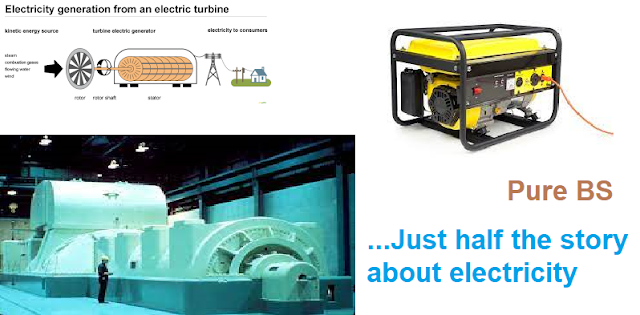Electrical Generator
Types of generators - classified by technology Ether
If classified according to basic science, generators can be divided into two categories up to hundreds of types. Depends on the criteria for classification. But if you classify it according to Ether theory, it might be simpler.
According to the Ether field theory, there are no elementary particles in the electrical field. The "gurus" of science since the 20th century have been paid to fabricate elementary particles, such as Electrons, Quarks, etc. These are magic bags of particles for lying and money laundering. .
Electrons don't exist:
"Does an Electron 'particle' exist? N. Tesla, Heaviside, JC Maxwell & CP Steinmetz said NO"
It's a video by Ken Wheeler. Learn about magnetic, dielectric, Ether construction here
According to Ether technology, it is possible to simplify the classification of generators into 2 categories:
- Generator harness voltage pulse - this is a generator of radiant energy, the use of which requires a battery. It can also be said that this is a generator that uses a battery to convert into pure electricity through an inverter. Learn more: How Does Generator Work
- AC generators, exploiting power in a rhythmic manner, the output voltage is usually in the form of a pure y = Sinx function graph. This is the generator that Nikola Tesla invented and then concealed for many years by energy corporations.
Real Electrical Generator
The work of Eric Dollard and Ken Wheeler will show us what the theory of electricity really is. Mainstream science with physics is only half the story of electricity.
To understand electricity you need to understand Ether. Quantum theory with its mysterious pockets of magic particles will not be able to satisfactorily solve questions about electricity.
k has the value :
The potential difference between two points M and N is the potential difference between VM and VN
VMN = VM – VN.
Now, applying to the transformer:
If the voltage in the secondary winding is increased, the current will decrease.
 |
| The red line is the Back EMF, aka Lenz's force. This is only satisfactorily explained by the theory of the Ether field with dielectrics and magnetism |
This is not reasonable. Because when the voltage between the two ends of the secondary winding increases, it means that the difference in potential between the two ends of the wire will increase. That infers that the q value will increase. So a full wire will have many electrons, and a place will have no or very few electrons.
But the increase or decrease in current is due to the number of electrons passing through a unit cross section of the conductor per unit time. That is: The amperage is also determined by the quotient between the electric charge ∆q that is displaced through the straight cross-section of a conductor in a period of time ∆t.
I = ∆q/∆t
When one end of the wire has many electrons, and one place has few electrons, with a closed circuit, then:
The current must increase, not decrease. Using quantum physics, magic particles would not be able to explain this.
The works of Eric Dollard and Ken Wheeler will answer this question.
Understanding the nature of "Electrical Generator" based on AC generator research and practice:
🧐 AC GENERATOR SECRET: Power FROM WHERE? 🧐
AC Generator Plan:
✔ The Real Nature of Tesla AC Generator
✔ Combination of induction motor and alternator
✔ Combine generators with induction motors - self-powered generators with rotary motion
✔ Various methods of generating high power immobile generators
✔ Or maybe called Overunity for the system. Mother Nature doesn't care about people calling or naming phenomena. Overunity or Free Energy, or Zero Point Energy (ZPE) are just a few different words



